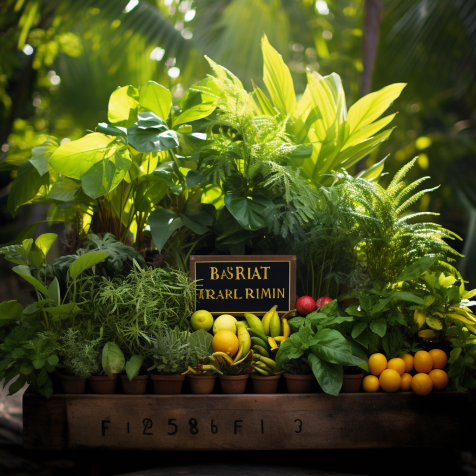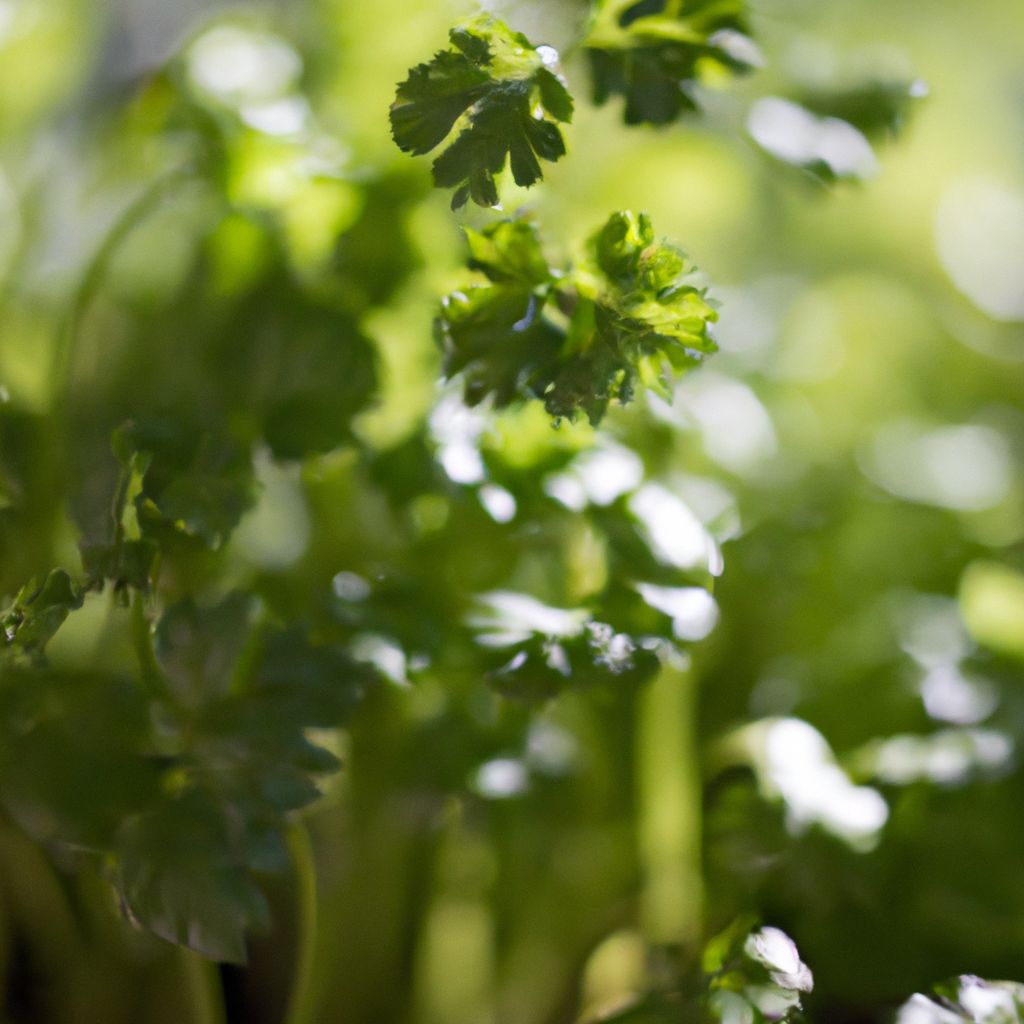For those living in the lush tropics, growing a bounty of herbs and spices is readily achievable. Tropical wet climates provide ideal conditions for cultivating flavorful and aromatic plants that can’t thrive in other environments. This comprehensive guide explores the diverse array of culinary crops grown in tropical wet climates and provides key guidance on successful cultivation.
Herbs Ideal for Tropical Wet Climates
Numerous herbs are well-suited to the warm, humid conditions found in tropical wet climates. Their adaptability, fast growth cycles and high yields make them excellent crops for these regions. Here are 10 herbs that thrive in tropical settings:
- Basil
- Lemongrass
- Mint
- Cilantro
- Ginger
- Turmeric
- Curry Leaf
- Pandan
- Kaffir Lime
- Galangal
Tropical wet climates confer many advantages for growing a lush herb garden:
- Abundant rainfall provides a steady supply of moisture, eliminating the need for extensive irrigation.
- Warm temperatures year-round accelerate growth and allow for multiple harvests annually.
- Rich humidity creates an ideal microclimate for herbs that thrive in damp conditions.
- Fertile tropical soils contain nutrients that enhance the aroma and flavor of herbs.
- The expanded growing season enables continuous cultivation of herbs.
- The biodiversity of the tropics offers many herb varieties to experiment with.
- Herbs provide culinary and medicinal value highly sought after in tropical regions.

Considerations for Growing Herbs in the Tropics
While tropical wet climates make herb cultivation simple, gardeners should consider the following factors for success:
- Drainage: Prevent waterlogged soil by adding organic matter or using raised beds to improve drainage.
- Irrigation: Monitor soil moisture and avoid overwatering even in rainy periods. Regulate watering to suit each herb’s needs.
- Sunlight: Plant herbs in locations receiving at least 6 hours of direct sun daily for robust growth.
- Soil pH: Test and amend soil to create ideal pH conditions for each herb variety. Most prefer slightly acidic to neutral pH.
- Fertilization: Use balanced organic fertilizers to provide nutrients without disrupting soil health.
- Pest control: In humid conditions, be vigilant about pests. Employ preventive measures like row covers, companion planting and organic pesticides.
- Air circulation: Prevent fungal diseases by providing adequate spacing and air flow between plants.
- Maintenance: Prune, harvest and monitor herbs diligently to maintain optimal health.
Optimizing Growth of Herbs
Several techniques can optimize growing conditions and improve herb yields in tropical gardens:
- Prepare soil by adding compost or rotted manure to improve fertility, drainage and moisture retention.
- Mulch around plants to conserve water, suppress weeds and protect shallow herb roots from temperature extremes.
- Water thoroughly and consistently, adjusting amounts and frequency to suit each herb’s preference.
- Allow ample space between plants to prevent overcrowding and increase air circulation.
- Place herbs where they will receive optimal sunlight, supplementing with grow lights as needed for indoor cultivation.
- Apply organic slow-release fertilizer at planting and reapply during the growing season to provide a steady nutrient supply.
- Prune herbs regularly to stimulate new growth and maintain an ideal compact, bushy shape.
- Harvest leaves, stems and flowers frequently to encourage continuous production.
- Monitor for pests like aphids, cabbage loopers and spider mites. Remove infested plants promptly and discard.
- Rotate herbs to different beds each season to disrupt pest cycles and improve soil health.

Overcoming Growing Challenges
While tropical wet climates allow a bountiful herb harvest, they also present unique challenges:
- Excess moisture promotes root rot and inhibits nutrient absorption. Improve drainage through raised beds, container planting or soil amendments.
- Diseases and pests thrive in humid warmth. Prevent with good air circulation, drip irrigation, and organic pest management. Remove and destroy infected plants.
- Heat and sun can scorch plants. Use shade cloth, proper spacing and afternoon watering to protect from burning. Choose heat-tolerant varieties.
- Rapid growth leads to crowding and competition for resources. Prune and thin plants, provide support structures, and replenish nutrients.
- Soil erosion from heavy rainfall can be prevented by mulching and ground cover plants with extensive root systems.
- Maintenance demands are higher in lush tropical conditions. Schedule regular care tasks like weeding, pruning and fertilizing.
Herb Crops Grown in Tropical Wet Climates
From signature Asian varieties to versatile classics, many herbs flourish in tropical gardens. Explore how these popular herbs thrive under tropical conditions:

Lemongrass
Tropical native lemongrass imparts a distinctly citrus flavor. It prefers consistent warmth and moisture, making it ideal for tropical herb gardens.
- Grows in clumps up to 4 feet tall.
- Perennial in tropical climates with possible winter die back.
- Requires full sun and moderate watering.
- Provides antioxidants, relieves indigestion and promotes relaxation.
- Adds bright, lemon flavor to soups, curries, teas and marinades.
- Use fresh or dried stems, removing tough outer layers before use.
Mint
Cool and refreshing mint grows vigorously in the tropics. Limit spread by planting in containers.
- Grows up to 2 feet tall with spreading rhizome root structures.
- Thrives in full sun to partial shade.
- Requires consistently moist soil.
- Rich in antioxidants and aids digestion.
- Use torn or chopped leaves in drinks, sauces, salads and marinades.
- Pinch off flowers to prolong harvest period.
Cilantro
A staple in many cuisines, cilantro grows well in tropical gardens with proper moisture.
- Fast-growing annual that grows up to 2 feet tall.
- Thrives in full sun but appreciates some afternoon shade in very hot climates.
- Keep soil consistently moist for best growth.
- Provides vitamins A, K and antioxidants. Can help digestion and heart health.
- Use leaves and stems to add fresh, citrusy flavor to salsa, curry, marinades and garnishes.
Ginger
The warming spice ginger reaches its full potential for flavor and medicinal properties when grown in tropical climates.
- Perennial with shoots sprouting from tuberous rhizomes.
- Reaches 3 to 4 feet tall.
- Thrives in warm, humid conditions with filtered sunlight.
- Contains anti-inflammatory and antioxidant compounds. Soothes nausea and aids digestion.
- Use fresh or dried root in curries, stir fries, teas, marinades and sweets.
Turmeric
Another beneficial spice, turmeric thrives in tropical gardens and provides antioxidant and anti-inflammatory benefits.
- Perennial that grows up to 3 feet tall with large lily-like leaves.
- Requires consistent warmth and moisture for optimal growth.
- Provides antioxidant and anti-inflammatory benefits. Boosts immunity.
- Use fresh or dried rhizomes in curries, soups, smoothies and golden milk.
Curry Leaf
Curry leaf is an essential ingredient in South Asian cuisine. Its herbaceous, aromatic flavor comes through fully when grown in tropical conditions.
- Tropical shrub growing up to 13 feet.
- Thrives in warm, humid environments with full sun to partial shade.
- Contains antioxidants. Can help control cholesterol and aid digestion.
- Use leaves in curries, chutneys and soups.
Pandan
Also called screwpine, Pandan offers both visual appeal and a sweet, nutty flavor perfect for tropical recipes.
- Shrub reaching up to 15 feet tall with slender drooping leaves.
- Requires consistent warmth and moisture.
- Grows well in partial sun.
- Use leaves to infuse a distinctive flavor into dishes and desserts.
Kaffir Lime
Kaffir lime provides the quintessential Southeast Asian citrus flavor. Growing it allows easy access to its unique double leaves and zesty rind.
- Shrub with fragrant double leaves and bumpy green citrus fruit.
- Thrives in tropical environments with high humidity.
- Provides antioxidant and antibacterial benefits.
- Use leaves in curry pastes and rind for flavoring.
Galangal
With its intense, gingery kick, galangal is perfect for adding flavor to Thai and Indonesian dishes.
- Perennial reaching 5 feet tall with long, strappy leaves.
- Requires tropical warmth and humidity to thrive.
- Contains antioxidants and aids digestion.
- Use sliced roots to flavor curries, soups and stir fries.

Achieving Abundance
With creativity and care, herb gardening in the tropics is abundantly rewarding. By selecting herbs suited to tropical wet climates, providing ideal growing conditions and promptly addressing challenges, a lush harvest of herbs can be enjoyed year round.
The vibrant tastes and fragrances of thriving herbs fully capture the lush essence of tropical wet climates. Home cooks have a wealth of flavor literally at their fingertips to transform everyday meals into culinary adventures. With each bouquet of fresh basil, sprig of bold mint or aroma of sizzling ginger, the quality and satisfaction of cooking is enhanced.
For herb enthusiasts under tropical skies, the possibilities are boundless. Experiment with new herb varieties, use them inventively, and find favorite combinations to define your signature tropical style. Let your garden become a haven filled with the sights, smells, tastes and benefits of nature’s bounty.















































